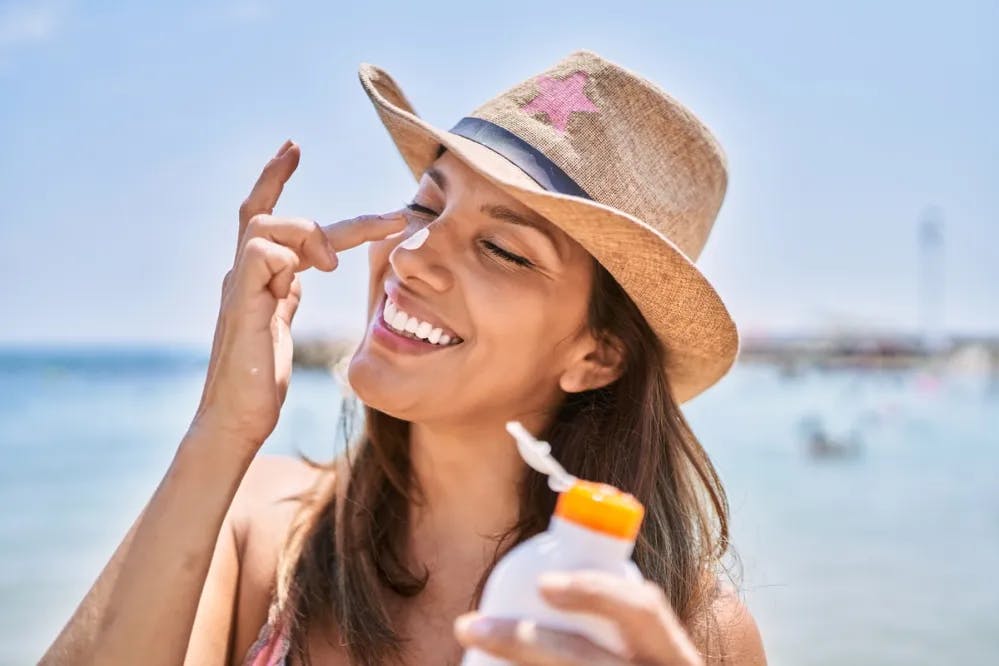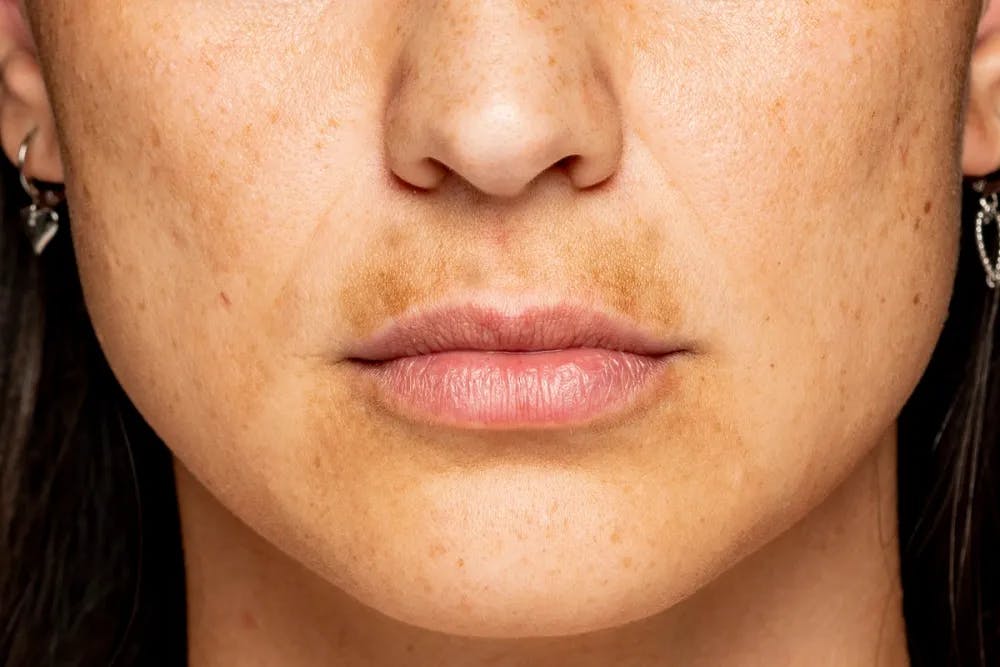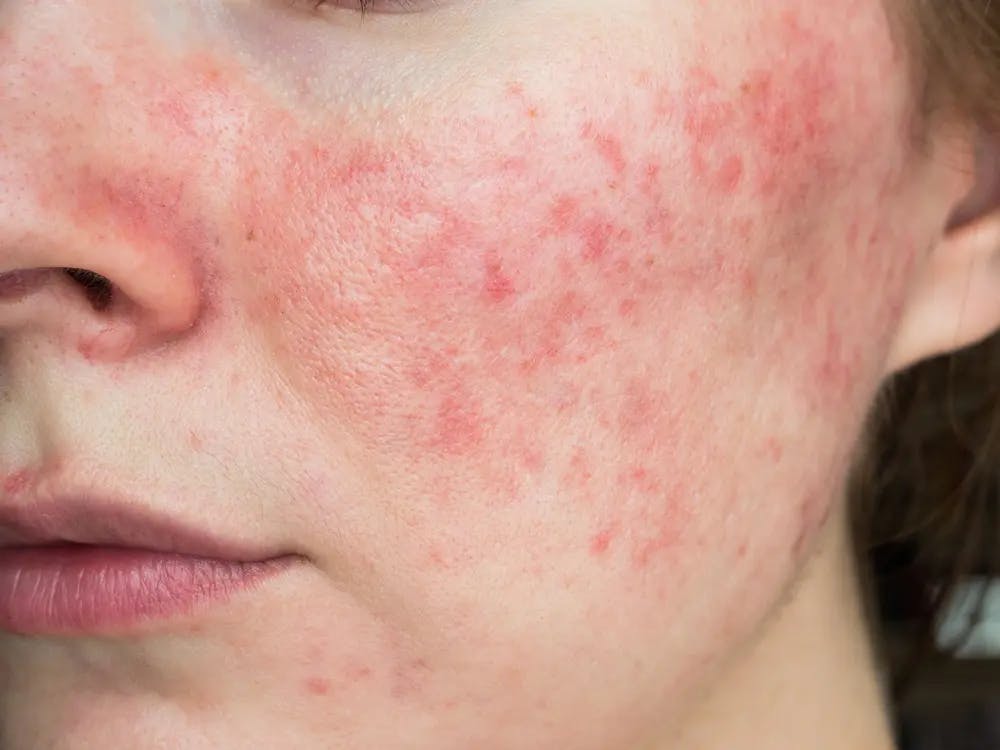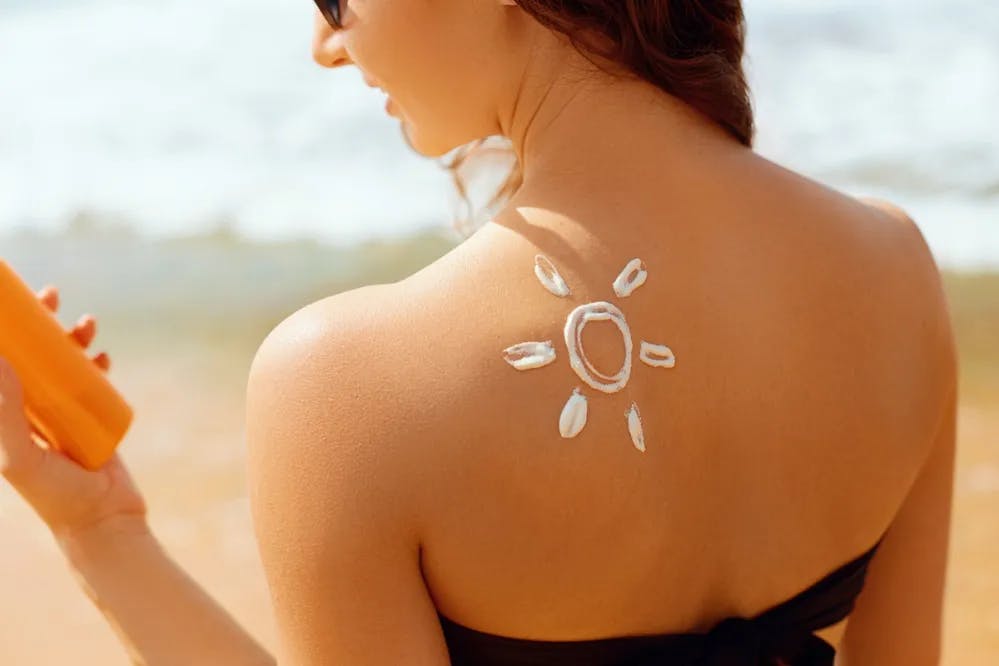Freckles: What They Are, Freckles vs. Moles, Causes & Removal
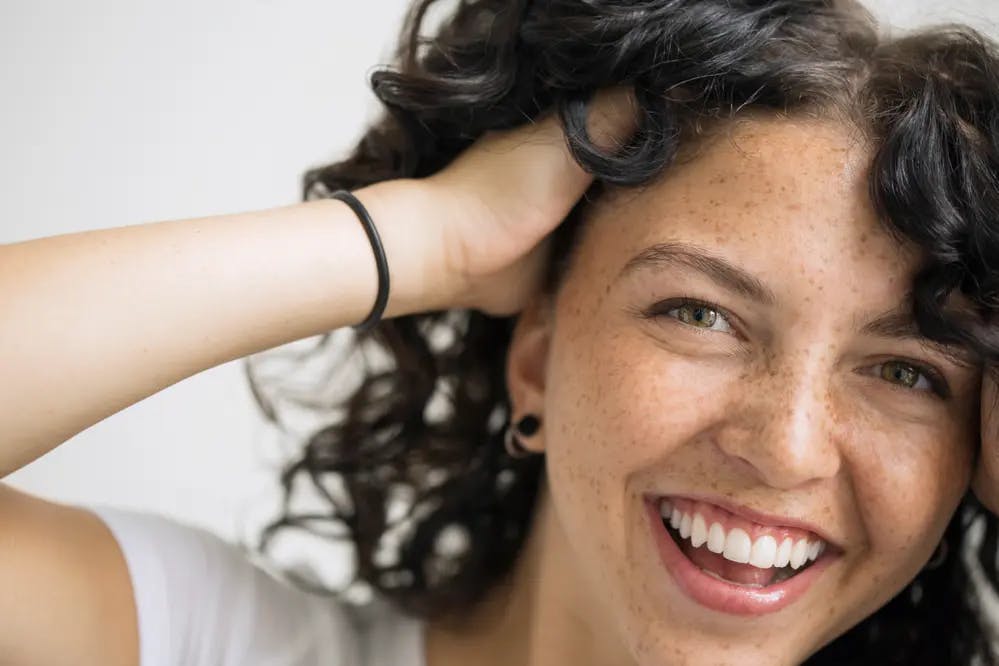
Table of Contents:
- Understanding Freckles
- To Love or Not To Love Your Freckles
- What’s the Difference Between Freckles and Moles?
- Types of Freckles: Ephelides vs Solar Lentigines
- What Causes Freckles?
- Controlling the Intensity of Freckles
- A Note on the Trend of Adding Faux Freckles
- Removal Options for Freckles
- Natural Remedies and Prevention
- Over-The-Counter Treatments
- Medical Procedures
- The Verdict on Freckles
As more people put their makeup down and embrace their natural uniqueness, freckles (small spots or patches of skin commonly found on people with fair skin tones) are becoming a fashionable pursuit - and, what’s more important, a choice.
In this article, we will explain what freckles are, how they differ from moles, and whether you can control their intensity or remove them if you’re unhappy with them. We will also share some experiences from four people with freckles: Zoe, Runo, Ryan, and T.
Understanding Freckles
So, what are freckles, and why were you born with them?
Freckles are small brown macules or distinct and visible areas of skin. They can appear on your face, neck, shoulders, and back of your hands and usually become prominent during the summer, when you’ll be more exposed to sunlight.
People with fair complexion, blonds, and redheads with blue eyes (skin types I or II) are especially susceptible to freckles. They are the result of increased production of melanin pigment.
Basically, some melanocytes rapidly produce large amounts of melanin grains under the influence of UV energy. This is what gives some areas of your skin a darkened color shade.1, 2
To Love or Not To Love Your Freckles
If you have freckles, chances are you will change your feelings about them. This is, at least, what we have discovered after asking various people whether they liked having them.
"I'd say my feelings surrounding them has definitely been on and off", explains Zoe. "Growing up, I really disliked having them. Always saw people with clear skin and felt I could never achieve that look. Even with makeup it would never be perfect flawless skin because I also disliked trying to cover them up!"
"I don’t truly think they make much of a difference for me personally," adds Runo. "I’ve had them since birth, so I’ve grown accustomed. I don’t have many feelings, though I do like them, I think... Enough to use a freckle pen to add them back in when they aren’t showing under my foundation!"
T and Ryan, who would like to remind us they grew up in a time when freckles were a point of ridicule, beg to differ. “I hated them when I was younger; still not too fond of them,” says T, and Ryan agrees: “I hated having them growing up, used to be a huge insecurity for me.”
What’s the Difference Between Freckles and Moles?
Freckles and moles have one thing in common: They are both types of skin spots. However, moles are clusters of melanocytes - while freckles are caused by an uneven distribution of pigment melanin.3
Although their appearance differs, some people are not sure whether all of their freckles are freckles… and not moles! "I really don't think I have moles, even though I have some dark-colored freckles none of them are raised. I can tell the difference! but I'm sure there's a grey area where I would be less confident," says Zoe, whose freckles are mostly light-brown but darken with sun exposure.
If you are unsure whether you have freckles or moles, here’s how you can tell them apart easily:
- Freckles are small, flat, and tan, light brown, or reddish. They are also usually uniform in color and can appear randomly scattered on your skin.
- Moles are typically larger than freckles and can vary in size, shape, and color. They may be flat or raised and can range from light tan to dark brown or black. Moles also often have a defined border and can be round or oval and, as T reminds us, “they can have hair!”
Another way to distinguish them? Easy: Freckles always appear in clusters as tiny spots spread over a large skin surface, whereas moles are single dark spots.
Types of Freckles: Ephelides vs Solar Lentigines
There are two main types of freckles: ephelides and solar lentigines.
Ephelides are the most common ones. They are usually small, flat, and light tan or light brown in color, and appear on areas of the skin that are regularly exposed to the sun. Ephelides also tend to fade or become less noticeable during the winter months.
Solar lentigines, also known as sunspots or age spots, are larger and darker than ephelides. They are flat, oval-shaped patches of skin that range in color from light brown to dark brown and do not fade significantly during the winter. They are typically caused by cumulative sun exposure over time, and their appearance is more commonly associated with aging.
What Causes Freckles?
Freckles are primarily caused by a combination of genetic factors and sun exposure or ultraviolet (UV) radiation.
Freckles tend to run in families. I know what you might be thinking: My parents don’t have them! Well, this doesn’t mean they are not carriers of the MC1R gene variant that causes freckles. People with fair or light skin, particularly those with red hair and light-colored eyes, tend to be more prone to freckles. This is because the MC1R gene affects the production and distribution of melanin in the skin.
Zuno shares: "Pretty much everyone in my family has freckles! The full body type; mostly on my dad's side, but my mom has a bit theirs mostly like nose area." For T, the case is different: "My kids do; my parents didn’t nor my siblings - at least that I remember." Runo only has one redhead sister-in-law but nobody with freckles in her bloodline. Lastly, Ryan explains that "my brother and mother do. My father does not."
The other significant factor in the formation of freckles is sun exposure. UV radiation stimulates the melanocytes to quickly start the production of melanin pigment. So, if you have freckle-prone skin, your melanin is unevenly distributed, which leads to the formation of freckles when UV light.4
Controlling the Intensity of Freckles
Solar protection is vital to control the intensity of freckles. Since freckles are often triggered or darkened by sun exposure, protecting your skin from the sun's harmful UV radiation can help prevent their development and minimize their appearance.
A study in the Journal of the American Medical Association reported that children with the tendency to freckle developed 30% to 40% fewer freckles when treated with an SPF 30 sunscreen daily as compared to children not treated with sunscreen.5
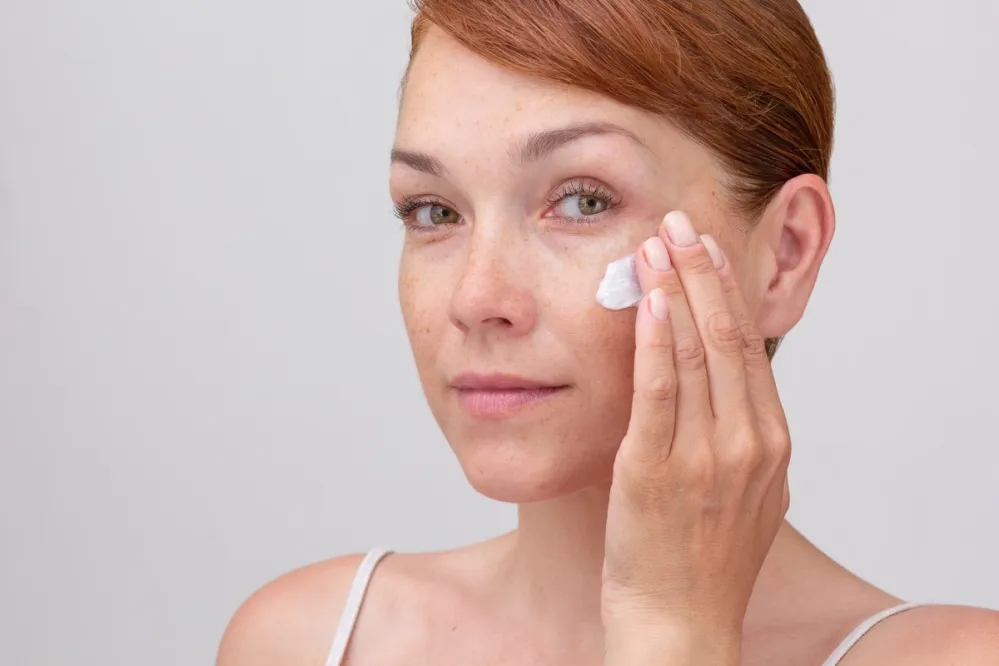
A Note on the Trend of Adding Faux Freckles
In the last few years, we’ve seen a growing trend that has gained popularity: As people sought to achieve a more natural, youthful, and sun-kissed look, they are actually applying fake freckles! This is done primarily using dotting or stripping color onto cheeks and nose. So, how do our freckled interviewees feel about this trend?
"I do it, so I have no room to complain," confesses Runo. "It’s not pushing any unachievable beauty standard and most people are already open about using faux freckles." "I would probably have to say I think it is silly, but if it is a trend, then that is what it is. It doesn’t impact the feelings I have for my own abundant freckles," thinks T.
Ryan, on the other hand, says she'd never do it herself - but she understands why others make this choice. "I used to hate the trend when I was younger since it used to be an insecurity of mine only for people to go out of their way for brown spots around their face. Nowadays, I’m neutral. I realized that my freckles were actually lovely and that I should’ve cherished them."
Removal Options for Freckles
Your friends might think they look cute, but when you see your reflection all you want to do is scrub the freckles off your face. If this is you, then you are probably wondering whether you can remove these spots.
Before we dive into the options for removing your freckles, let us share Zoe’s words of advice: “I do miss them most times”. T doesn’t, Runo is neutral. For Ryan, the answer is both yes and no; “they are a symbol of nostalgia and my younger years. So, I wished I had appreciated them more.”
If you know you want to remove your freckles, you have three options: Home remedies, over-the-counter treatments, and medical procedures. Let’s go through each of them in some detail.
Natural Remedies and Prevention
Apart from wearing sun protection and sunscreen (something that will only go that far), there is no way to prevent freckles. So, you should first focus your efforts on making sure your skin doesn’t receive excessive sun exposure.
In other words: Seek shade, wear protective clothing, and shield your skin using a high SPF.
Some people believe that applying lemon juice to freckles can help lighten their appearance (because it contains natural acids that may have a mild bleaching effect). However, it's important to note that lemon juice can be irritating to the skin, and it may not be effective for all.
Certain natural ingredients, such as aloe vera, buttermilk, papaya, and yogurt, are believed to have skin-lightening properties. The effectiveness of these remedies varies, and results may be subtle or not noticeable at all.
Over-The-Counter Treatments
There are two main over-the-counter treatments you can try: topical creams and serums containing lightening agents and exfoliation and skin-brightening products.
Look for products that contain ingredients like niacinamide, azelaic acid, kojic acid, or Vitamin C, which are known to have brightening properties. These may help fade freckles over time:
GOODAL’s Green Tangerine Vitamin C Serum
Naturium’s 10% Azelaic Acid Serum
Paula’s Choice’s CLINICAL Discoloration Repair Serum
Over-the-counter chemical peels with alpha hydroxy acids (AHAs) or beta hydroxy acids (BHAs), and retinoids can also help exfoliate the skin and fade freckles as they promote cell turnover. These peels work by removing the top layers of the skin, promoting cell turnover, and revealing fresher, lighter skin:
Paula’s Choice CLINICAL 1% Retinol Treatment
CeraVe’s Resurfacing Retinol Serum
Peach Slices’ Acne Exfoliating Toner
Medical Procedures
Here's an overview of which medical procedures are available if you want to remove your freckles once and for all:
- Chemical peels and microdermabrasion: Trichloroacetic acid (TCA) peels penetrate deeper into the skin than over-the-counter options, providing more significant results. Microdermabrasion is another option that can also help reduce the appearance of freckles (although only over multiple sessions) by exfoliating the skin using tiny abrasive particles.
- Laser therapy and intense pulsed light (IPL) treatment: Laser treatments like intense pulsed light (IPL) or fractional laser resurfacing use specific wavelengths of light to break down the excess pigment in the skin. Thus, they can target and lighten freckles.
- Cryosurgery and surgical excision: Cryosurgery involves freezing the freckles with liquid nitrogen, causing them to scab and eventually fall off. This procedure is generally used for larger or darker spots.
The Verdict on Freckles
Freckles and moles have different appearances and causes (freckles are small, flat, tan, and often caused by a combination of genetic factors and sun exposure, while moles are typically larger and vary in shape and color).
Freckles can become more pronounced or darken with sun exposure. Therefore, protecting your skin by using sunscreen, wearing protective clothing, seeking shade, and using other sun protection measures is crucial.
Many people embrace and celebrate their freckles as unique and beautiful features, something that no doubt promotes self-confidence and self-acceptance. However, the choice to explore removal options is personal.
If you are unhappy with your "angel kisses", as your grandma may have called them, you can take steps to reduce their appearance or make them go away entirely. If you're planning on doing this, always seek professional advice from a dermatologist.
Do you love your freckles? Are you neutral about them? Or have you already removed them and have some advice? Share your experience with others at Breakout!
References:
- Praetorius, C.; Sturm, R. A.; Steingrimsson, E., Sun‐induced freckling: ephelides and solar lentigines. Pigment Cell Melanoma Res. 2014, 27 (3), 339-350.
- Baumann, L. S.; Baumann, L., Cosmetic dermatology. McGraw-Hill Professional Publishing: 2009.
- Borland, R.; Marks, R.; Noy, S., Public knowledge about characteristics of moles and melanomas. Australian Journal of Public Health 1992, 16 (4), 370-375.
- Breathnach, A. S.; Wyllie, L. M., Electron microscopy of melanocytes and melanosomes in freckled human epidermis. J. Invest. Dermatol. 1964, 42 (5), 389-394.
- Gallagher, R. P.; Rivers, J. K.; Lee, T. K.; Bajdik, C. D.; McLean, D. I.; Coldman, A. J., Broad-spectrum sunscreen use and the development of new nevi in white children: a randomized controlled trial. Jama 2000, 283 (22), 2955-2960.
